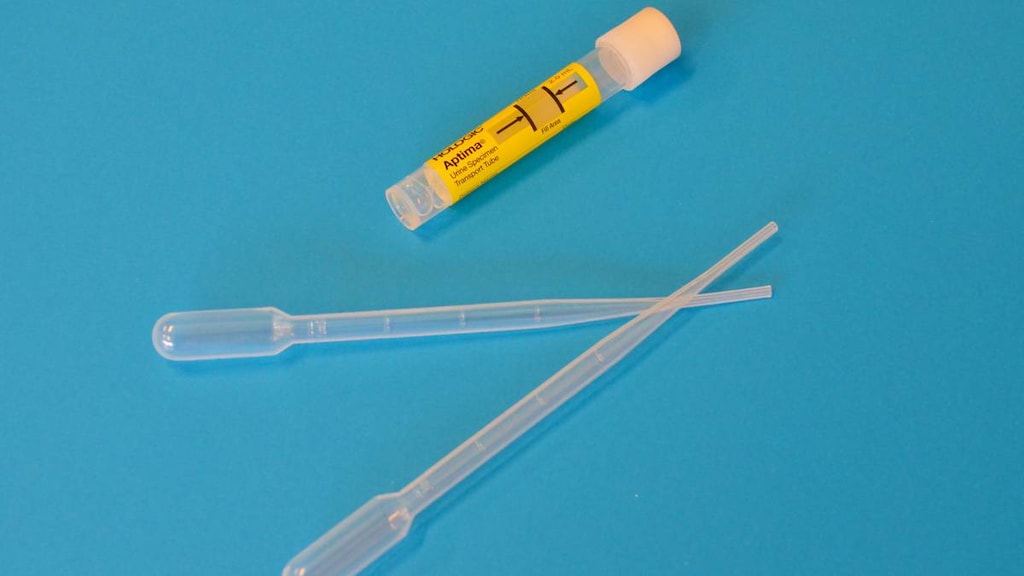Dosage Forms
Excipient information presented when available (limited, particularly for generics); consult specific product labeling. [DSC] = Discontinued product
Solution Reconstituted, Injection:
Cefotan: 2 g (1 ea)
Solution Reconstituted, Injection [preservative free]:
Cefotan: 1 g (1 ea)
Generic: 1 g (1 ea); 2 g (1 ea); 10 g (1 ea [DSC])
Solution Reconstituted, Intravenous [preservative free]:
Generic: 1 g (1 ea); 2 g (1 ea)
Pharmacology
Mechanism of Action
Inhibits bacterial cell wall synthesis by binding to one or more of the penicillin-binding proteins (PBPs) which in turn inhibits the final transpeptidation step of peptidoglycan synthesis in bacterial cell walls, thus inhibiting cell wall biosynthesis. Bacteria eventually lyse due to ongoing activity of cell wall autolytic enzymes (autolysins and murein hydrolases) while cell wall assembly is arrested.
Pharmacokinetics/Pharmacodynamics
Distribution
Widely to body tissues and fluids including bile, gallbladder, kidney, skin, tonsils, uterus, sputum, prostatic and peritoneal fluids
Excretion
Urine (51% to 81%, as unchanged drug)
Time to Peak
Serum: IM: 1 to 3 hours
Half-Life Elimination
3 to 4.6 hours, prolonged in patients with moderately impaired renal function (up to 10 hours)
Protein Binding
88%
Use: Labeled Indications
Bone and joint infections: Treatment of bone and joint infections caused by Staphylococcus aureus.
Gynecologic infections: Treatment of gynecologic infections caused by S. aureus, (including penicillinase- and non-penicillinase-producing strains), Staphylococcus epidermidis, Streptococcus spp. (excluding enterococci), Streptococcus agalactiae, Escherichia coli, Proteus mirabilis, Neisseria gonorrhoeae, Bacteroides spp. (excluding Bacteroides distasonis, Bacteroides ovatus, Bacteroides thetaiotaomicron), Fusobacterium spp., and gram-positive anaerobic cocci (including Peptococcus and Peptostreptococcus spp.).
Limitations of use: Cefotetan has no activity against Chlamydia (Chlamydophila) trachomatis. When treating pelvic inflammatory disease, add appropriate antichlamydial coverage.
Lower respiratory tract infections: Treatment of lower respiratory tract infections caused by Streptococcus pneumoniae, S. aureus (penicillinase- and non-penicillinase-producing strains), Haemophilus influenzae (including ampicillin-resistant strains), Klebsiella spp. (including K. pneumoniae), E. coli, P. mirabilis, and Serratia marcescens.
Serious infections: Treatment of confirmed or suspected gram-positive or gram-negative sepsis or in patients with other serious infections (often administered with concomitant aminoglycosides).
Skin and skin structure infections: Treatment of skin and skin structure infections due to S. aureus (penicillinase- and non-penicillinase-producing strains), Staphylococcus epidermidis, Streptococcus pyogenes, Streptococcus spp. (excluding enterococci), E. coli, K. pneumoniae, Peptococcus niger, Peptostreptococcus spp.
Surgical (perioperative) prophylaxis: Preoperative administration in surgical procedures that are classified as clean contaminated or potentially contaminated (eg, cesarean section, abdominal or vaginal hysterectomy, transurethral surgery, biliary tract surgery, GI surgery).
Urinary tract infections: Treatment of urinary tract infections caused by E. coli, Klebsiella spp. (including K. pneumoniae), P. mirabilis and Proteus spp. (which may include the organisms now called Proteus vulgaris, Providencia rettgeri, and Morganella morganii).
Contraindications
Hypersensitivity to cefotetan, any component of the formulation, or other cephalosporins; previous cephalosporin-associated hemolytic anemia
Dosage and Administration
Dosing: Adult
Susceptible infections: IM, IV: Usual dose: 1 to 2 g every 12 hours; for life-threatening infections use 3 g IV every 12 hours (maximum dose/day: 6 g; for IM use, manufacturer’s labeling includes a maximum dose of up to 4 g/day).
Pelvic inflammatory disease: IV: 2 g every 12 hours in combination with doxycycline oral or IV; transition from parenteral to oral therapy using doxycycline can usually be initiated within 24 to 48 hours of clinical improvement for a total treatment duration of 14 days. If tubo-ovarian abscess is present, oral clindamycin or oral metronidazole in combination with doxycycline is preferred to complete at least 14 days of therapy (CDC [Workowski 2015])
Skin and skin structure infections:
Mild to moderate: Note: K. pneumoniae infections should be treated with 1 or 2 g IV or IM every 12 hours.
IM, IV: 1 g every 12 hours
IV: 2 g every 24 hours
Severe: IV: 2 g every 12 hours
Surgical (perioperative) prophylaxis: IV: 2 g within 60 minutes prior to surgery. Doses may be repeated in 6 hours if procedure is lengthy or if there is excessive blood loss (Bratzler 2013).
Manufacturer’s labeling: Dosing in the prescribing information may not reflect current clinical practice. IV: 1 to 2 g 30 to 60 minutes prior to surgery.
Urinary tract infection: IM, IV: 500 mg every 12 hours or 1 to 2 g every 12 to 24 hours
Dosing: Geriatric
Refer to adult dosing.
Dosing: Pediatric
General dosing, susceptible infection (Red Book [AAP 2012]): Infants, Children, and Adolescents: IM, IV:
Mild to moderate infection: 30 mg/kg/dose every 12 hours, maximum single dose: 2,000 mg
Severe infection: 50 mg/kg/dose every 12 hours; maximum dose: 3,000 mg/dose
Intra-abdominal infection, complicated: Infants, Children, and Adolescents: IV: 20 to 40 mg/kg/dose every 12 hours. Note: Due to high rates of B. fragilis group resistance, not recommended for the treatment of community-acquired intra-abdominal infections (Solomkin 2010).
Pelvic inflammatory disease: Adolescents: IV: 2,000 mg every 12 hours; used in combination with doxycycline (CDC 2010)
Peritonitis, prophylaxis for patients receiving peritoneal dialysis undergoing gastrointestinal or genitourinary procedures: Infants, Children, and Adolescents: IV: 30 to 40 mg/kg administered 30 to 60 minutes before procedure; maximum dose: 2,000 mg/dose (Warady [ISPD 2012])
Surgical prophylaxis: Children and Adolescents: IV: 40 mg/kg 60 minutes prior to procedure; may redose in 6 hours; maximum dose: 2,000 mg (Bratzler 2013)
Reconstitution
IV use: Reconstitute intact vials with SWFI (1 g vial with 10 mL and 2 g vial with 10 to 20 mL); reconstituted solution may be directly injected or further diluted for infusion in 50 to 100 mL D5W or NS.
IM use: Reconstitute intact vials with SWFI, NS, bacteriostatic water for injection, or lidocaine (0.5% or 1%). The 1 g vial may be diluted with 2 mL to yield 400 mg/mL; 2 g vial may be diluted with 3 mL to yield 500 mg/mL.
Administration
IM: Inject deep IM into large muscle mass.
IV: Inject via direct IV over 3 to 5 minutes. Infuse via intermittent infusion over 30 minutes.
Dietary Considerations
Some products may contain sodium.
Storage
Vials: Store intact vials at 20°C to 25°C (68°F to 77°F). Reconstituted solution is stable for 24 hours at 25°C (77°F), 96 hours at 5°C (41°F) and 7 days at -20°C (-4°F). In disposable glass or plastic syringes, solution is stable for 24 hours at 25°C (77°F) and 96 hours at 5°C (41°F). .
Duplex containers: Store at 20°C to 25°C (68°F to 77°F) prior to reconstitution; excursions permitted to 15°C to 30°C (59°F to 86°F). Foil strip should not be removed until ready for use; after foil strip removal, use product within 7 days. After reconstitution, use within 12 hours if stored at room temperature or within 5 days if stored under refrigeration.
Drug Interactions
Alcohol (Ethyl): CefoTEtan may enhance the adverse/toxic effect of Alcohol (Ethyl). Monitor therapy
Aminoglycosides: Cephalosporins (2nd Generation) may enhance the nephrotoxic effect of Aminoglycosides. Monitor therapy
BCG (Intravesical): Antibiotics may diminish the therapeutic effect of BCG (Intravesical). Avoid combination
BCG Vaccine (Immunization): Antibiotics may diminish the therapeutic effect of BCG Vaccine (Immunization). Monitor therapy
Carbocisteine: CefoTEtan may enhance the adverse/toxic effect of Carbocisteine. Specifically, cefotetan may enhance adverse effects of alcohol that is present in liquid formulations of carbocisteine-containing products. Monitor therapy
Cholera Vaccine: Antibiotics may diminish the therapeutic effect of Cholera Vaccine. Management: Avoid cholera vaccine in patients receiving systemic antibiotics, and within 14 days following the use of oral or parenteral antibiotics. Avoid combination
Lactobacillus and Estriol: Antibiotics may diminish the therapeutic effect of Lactobacillus and Estriol. Monitor therapy
Probenecid: May increase the serum concentration of Cephalosporins. Monitor therapy
RifAMPin: Cephalosporins (N-methylthiotetrazole [NMTT] Side Chain Containing) may enhance the adverse/toxic effect of RifAMPin. Specifically, the risk for bleeding may be increased. Management: Avoid concomitant use of rifampin with cephalosporins that contain an N-methylthiotetrazole (NMTT) side chain when possible. If combined, closely monitor prothrombin time or other coagulation tests and administer vitamin K as needed. Consider therapy modification
Sodium Picosulfate: Antibiotics may diminish the therapeutic effect of Sodium Picosulfate. Management: Consider using an alternative product for bowel cleansing prior to a colonoscopy in patients who have recently used or are concurrently using an antibiotic. Consider therapy modification
Typhoid Vaccine: Antibiotics may diminish the therapeutic effect of Typhoid Vaccine. Only the live attenuated Ty21a strain is affected. Management: Vaccination with live attenuated typhoid vaccine (Ty21a) should be avoided in patients being treated with systemic antibacterial agents. Use of this vaccine should be postponed until at least 3 days after cessation of antibacterial agents. Consider therapy modification
Vitamin K Antagonists (eg, warfarin): Cephalosporins may enhance the anticoagulant effect of Vitamin K Antagonists. Monitor therapy
Test Interactions
Positive direct Coombs'. False-positive urinary glucose test using cupric sulfate (Benedict's solution, Clinitest, Fehling's solution); use test based on enzymatic glucose oxidase. May cause false-positive serum or urine creatinine with Jaffé reaction
Adverse Reactions
1% to 10%:
Gastrointestinal: Diarrhea (1%)
Hepatic: Increased serum transaminases (1%)
Hypersensitivity: Hypersensitivity reaction (1%)
<1%, postmarketing, and/or case reports: Agranulocytosis, anaphylaxis, eosinophilia, fever, hemolytic anemia, hemorrhage, increased blood urea nitrogen, increased serum creatinine, leukopenia, nausea, nephrotoxicity, phlebitis, prolonged prothrombin time, pruritus, pseudomembranous colitis, skin rash, thrombocythemia, thrombocytopenia, urticaria, vomiting
Warnings/Precautions
Concerns related to adverse effects:
- Elevated INR: May be associated with increased INR and subsequent bleeding, especially in nutritionally deficient patients, prolonged treatment, or patients with cancer, hepatic or renal disease. Monitor coagulation parameters and manage as clinically indicated (eg, administration of phytonadione).
- Hemolytic anemia: May rarely cause hemolytic anemia (including fatalities). Has been associated with a higher risk of hemolytic anemia relative to other cephalosporins (approximately threefold); monitor carefully during use and consider cephalosporin-associated immune anemia in patients who have received cefotetan within 2 to 3 weeks (either as treatment or prophylaxis). Discontinue drug, if applicable, and institute supportive measures as clinically indicated.
- Hypersensitivity: Hypersensitivity reactions, including anaphylaxis, may occur. If an allergic reaction occurs, discontinue treatment and institute appropriate supportive measures.
- Penicillin allergy: Use with caution in patients with a history of penicillin allergy.
- Superinfection: Prolonged use may result in fungal or bacterial superinfection, including C. difficile-associated diarrhea (CDAD) and pseudomembranous colitis; CDAD has been observed >2 months postantibiotic treatment.
Disease-related concerns:
- GI disease: Use with caution in patients with a history of GI disease, particularly colitis.
- Renal impairment: Use with caution in patients with renal impairment; dosage adjustment required.
Concurrent drug therapy issues:
- Drug-drug interactions: Potentially significant interactions may exist, requiring dose or frequency adjustment, additional monitoring, and/or selection of alternative therapy. Consult drug interactions database for more detailed information
Monitoring Parameters
Monitor renal, hepatic, and hematologic function periodically with prolonged therapy. Monitor prothrombin time in patients at risk of prolongation during cephalosporin therapy (nutritionally-deficient, prolonged treatment, renal or hepatic disease). Monitor for signs and symptoms of hemolytic anemia, including hematologic parameters where appropriate.
Pregnancy
Pregnancy Risk Factor
B
Pregnancy Considerations
Adverse events have not been observed in animal reproduction studies. Cefotetan crosses the placenta and produces therapeutic concentrations in the amniotic fluid and cord serum. Cefotetan is one of the antibiotics recommended for use with cesarean delivery.
Patient Education
- Discuss specific use of drug and side effects with patient as it relates to treatment. (HCAHPS: During this hospital stay, were you given any medicine that you had not taken before? Before giving you any new medicine, how often did hospital staff tell you what the medicine was for? How often did hospital staff describe possible side effects in a way you could understand?)
- Patient may experience diarrhea. Have patient report immediately to prescriber bruising, bleeding, injection site irritation, unable to pass urine, change in amount of urine passed, chills, sore throat, vaginal pain, itching, and discharge, seizures, signs of hemolytic anemia (severe loss of strength and energy, dark urine, or yellow skin), or signs of Clostridium difficile (C. diff)-associated diarrhea (abdominal pain or cramps, severe diarrhea or watery stools, or bloody stools) (HCAHPS).
- Educate patient about signs of a significant reaction (eg, wheezing; chest tightness; fever; itching; bad cough; blue skin color; seizures; or swelling of face, lips, tongue, or throat). Note: This is not a comprehensive list of all side effects. Patient should consult prescriber for additional questions.
Intended Use and Disclaimer: Should not be printed and given to patients. This information is intended to serve as a concise initial reference for healthcare professionals to use when discussing medications with a patient. You must ultimately rely on your own discretion, experience and judgment in diagnosing, treating and advising patients.




